RADIUM AGE ART (1908)
By:
March 24, 2024
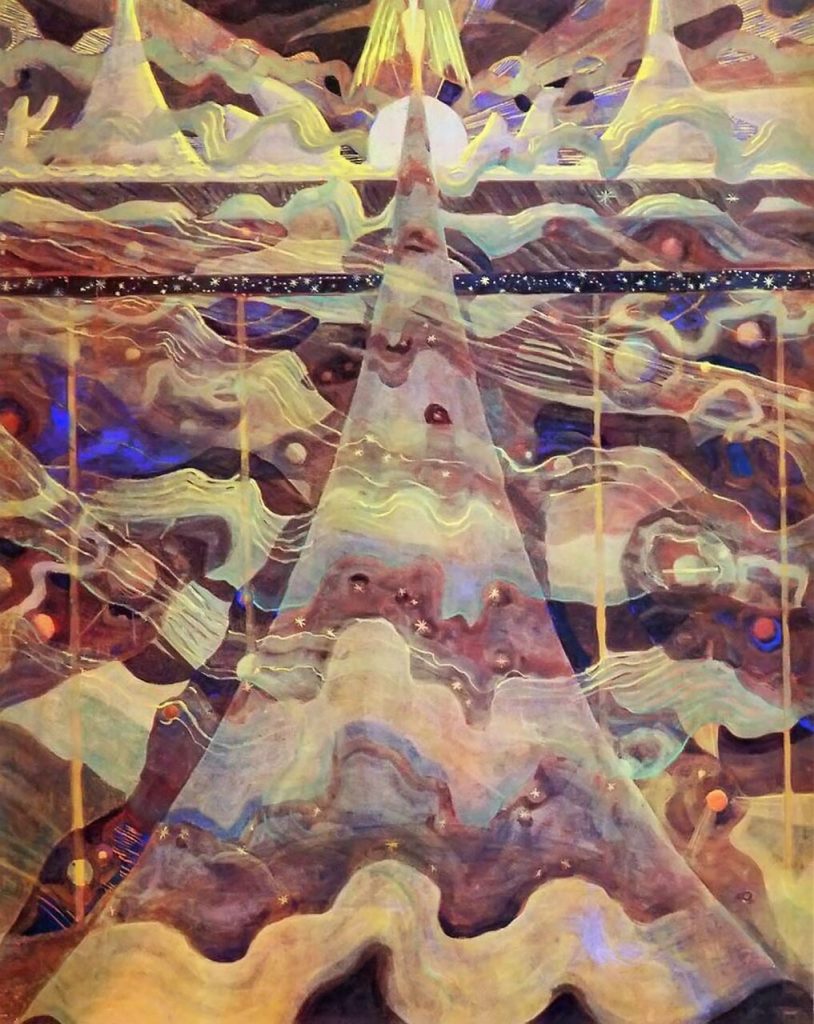
A series of notes regarding proto sf-adjacent artwork created during the sf genre’s emergent Radium Age (1900–1935). Very much a work-in-progress. Curation and categorization by Josh Glenn, whose notes are rough-and-ready — and in some cases, no doubt, improperly attributed. Also see these series: RADIUM AGE TIMELINE and RADIUM AGE POETRY.
RADIUM AGE ART: 1900 | 1901 | 1902 | 1903 | 1904 | 1905 | 1906 | 1907 | 1908 | 1909 | 1910 | 1911 | 1912 | 1913 | 1914 | 1915 | 1916 | 1917 | 1918 | 1919 | 1920 | 1921 | 1922 | 1923 | 1924 | 1925 | 1926 | 1927 | 1928 | 1929 | 1930 | 1931 | 1932 | 1933 | 1934 | 1935 | THEMATIC INDEX.
According to HILOBROW’s periodization scheme, the years 1908–1909 are the apex of the cultural decade known as the Oughts (1904–1913).
Birth of Cubism. So-called Analytical Cubism (often dated 1908–1912) rejects the conventional idea of linear perspective in favor of greater emphasis on the two-dimensional picture plane. It’s been called the most intellectual of all the avant-garde movements.
Kandinsky settles in Murnau am Staffelsee. Also this year, he buys a copy of Thought-Forms by Besant and Leadbeater (see 1901). Hilton Kramer on the emergence of abstraction early in the twentieth century’s second decade: This innovation “represented for its pioneer creators a solution to a spiritual crisis”; it entailed “a categorical rejection of the materialism of modern life”; and it was meant to play a role in “redefining our relationship to the universe.”
Hermann Minkowski — building on Poincaré’s breakthroughs — formulates a four-dimensional geometry, allowing work in the theory of relativity to be transformed into work on the geometry of spacetime; his theory will not reach the general public until after WWI.
Henry Ford develops the assembly line method of automobile manufacturing and produces the first Model T automobile.
Robert Baden-Powell’s Scouting for Boys begins publication in London. The book eventually sells over 100 million copies, and effectively begins the worldwide Boy Scout movement.
The Hoover Company acquires manufacturing rights to the upright portable vacuum cleaner patented earlier this year.
Western bandits Butch Cassidy and the Sundance Kid are supposedly killed in Bolivia.
King Leopold II of Belgium formally relinquishes his personal control of the Congo Free State (becoming Belgian Congo) to Belgium, following evidence collected by Roger Casement — the “father of twentieth-century human rights investigations,” and model for the character of Lord John Roxton in Arthur Conn Doyle’s 1912 proto-sf novel, The Lost World — of maladministration.
See: RADIUM AGE: 1908
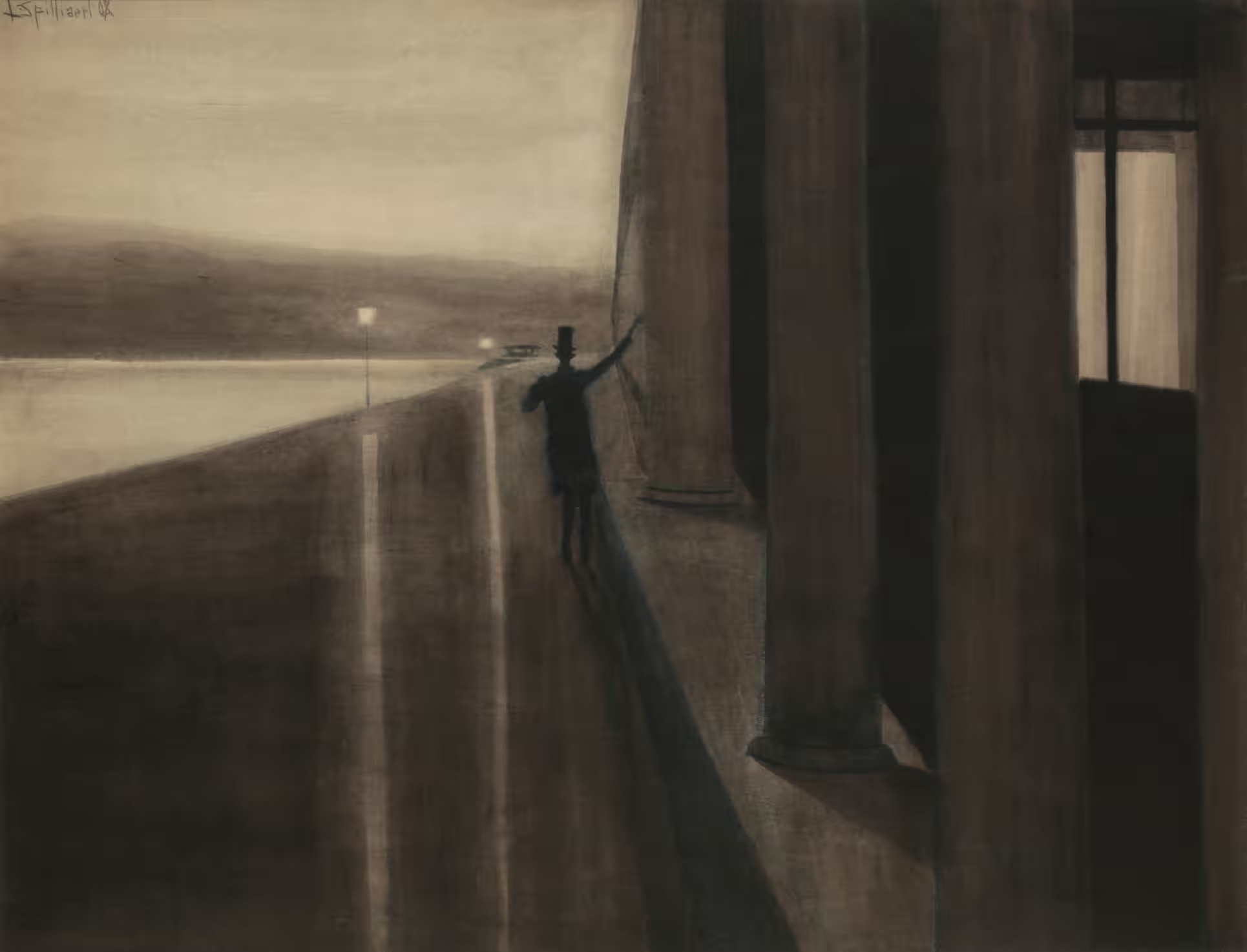
Belgian artist Leon Spilliaert transforms a popular tourist beach in Ostend into a haunting, nightmarish image, where the soaring perspective threatens to engulf the viewer.
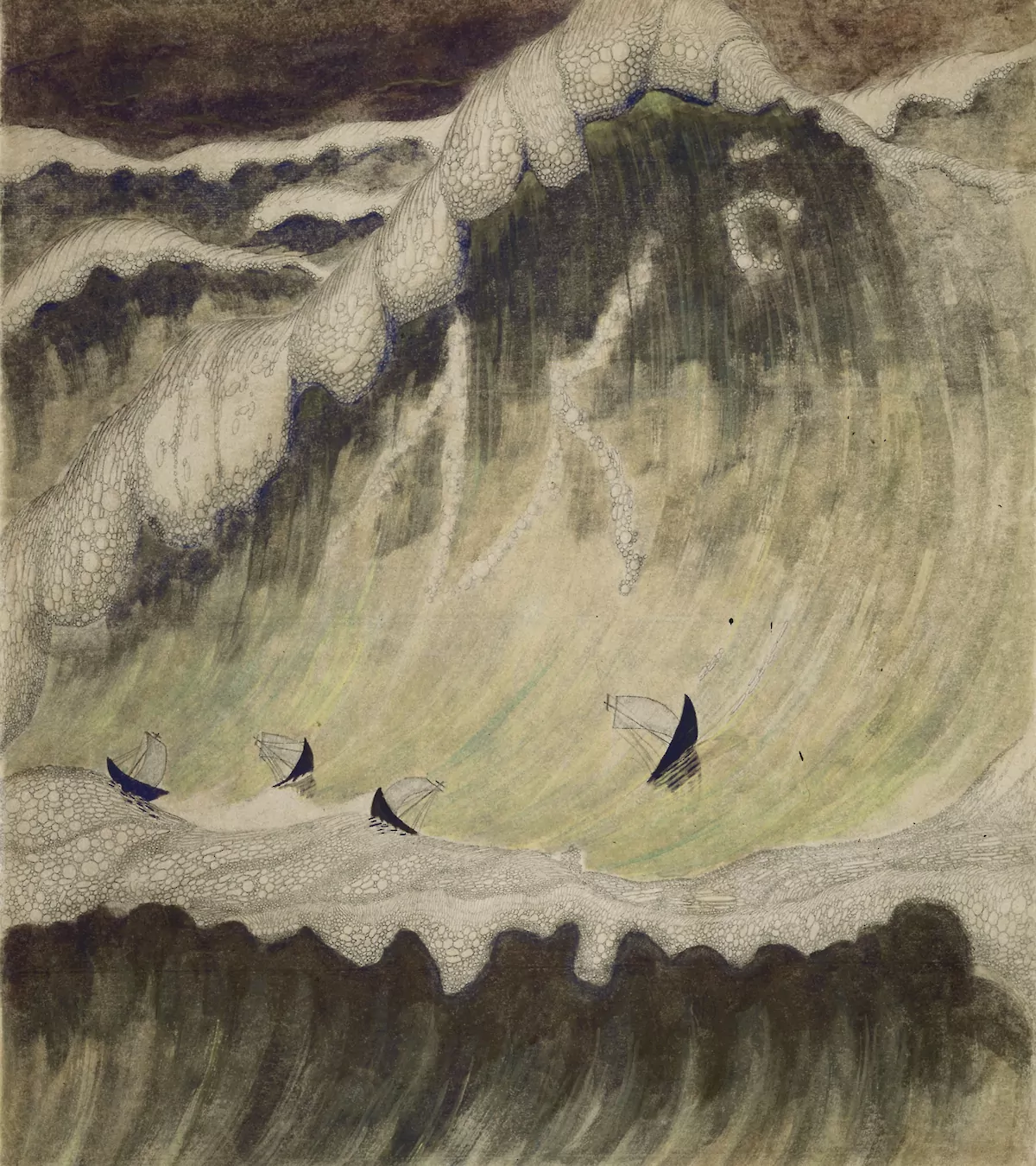

SONATA VI are two paintings, Stellar sonata. Allegro and Stellar sonata. Andante, of Mikalojus Konstantinas Čiurlionis from 1908. The artist uses principles of musical composition in the paintings associated with the structure of musical forms such as sonatas, fugues or preludes. He united motifs from reality, spatial levels, dates and contrasting symbolic images into a single compositional system or cycle, based on the dynamics of rhythm. Stellar Sonata. Allegro is a vision of outer space with fantastic multi-layered images.
Čiurlionis imagines the universe as a grand polyphonic symphony, junctions of cosmic nebulae, stars and sunlight. The waves of this space ocean – the songs – mix together to form a rich, ornamented and beautiful network pierced by the path of the Milky Way. The movement in outer space is not chaotic, but rhythmic and harmonic.
Pepe Karmel describes the painting like so: “An oceanic cosmos, with a filmy bridge extending from the foreground towrds a glowing sun in the distance.”
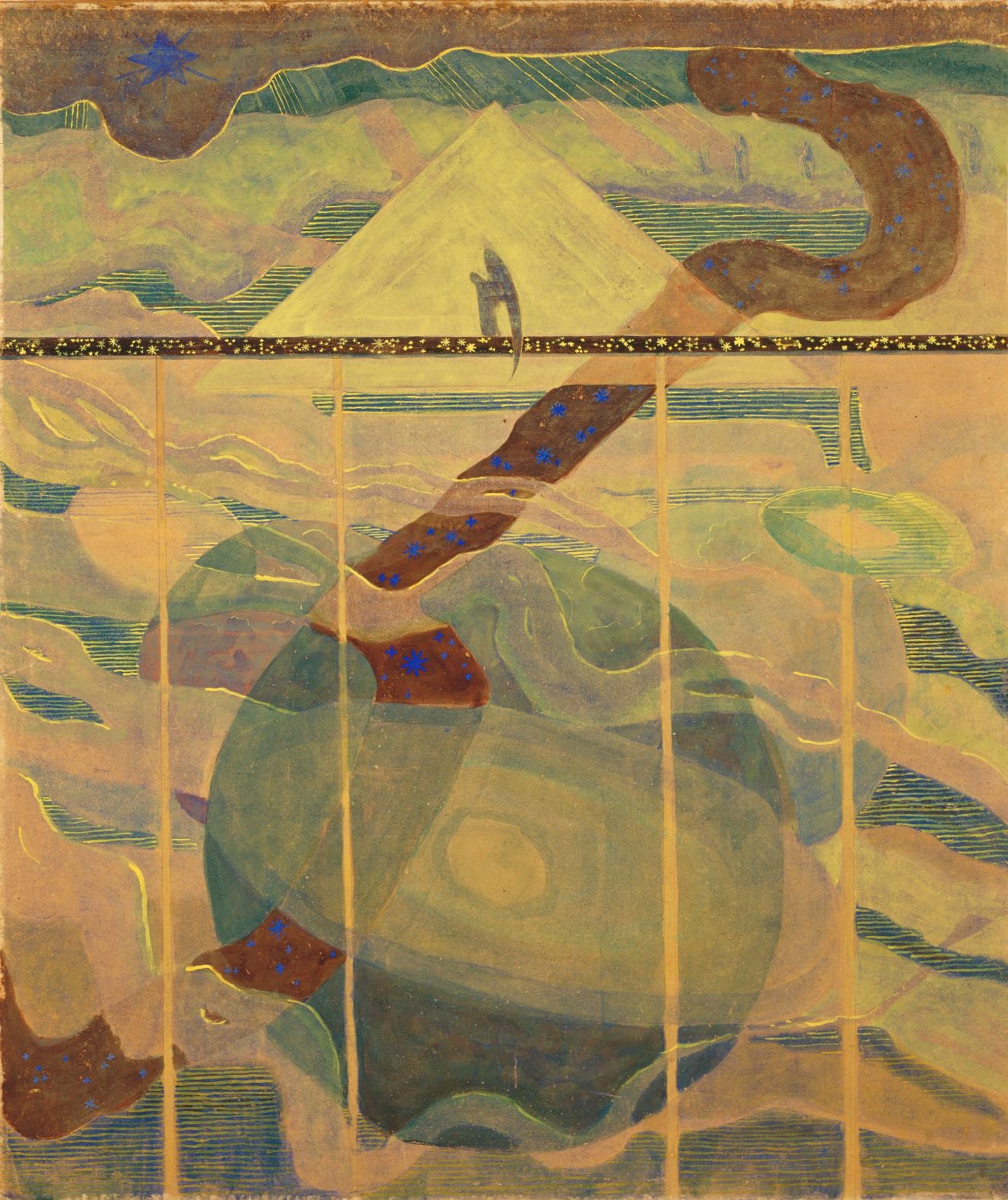
The second part of the sonata (Stellar sonata. Andante) is also solemn and monumental, but much more restrained: a few bands of cosmic fog blur one spherical planet, perhaps the Earth itself, and an angel goes slowly over the band of the Milky Way, and gives the impression of serene and magnificent music.

Cézannian trees and houses depicted in the absence of any unifying perspective. Considered either an important Proto-Cubist landscape or the first Cubist landscape. “Houses at l’Estaque” was refused at the Salon d’Automne in 1908. The art critic Louis Vauxcelles recounted how Matisse told him at the time, “Braque has just sent in a painting made of little cubes.” It was Vauxcelles who called Braque a daring man who despises form, “reducing everything, places and a figures and houses, to geometric schemas, to cubes.” This led to the name of the Cubist movement.
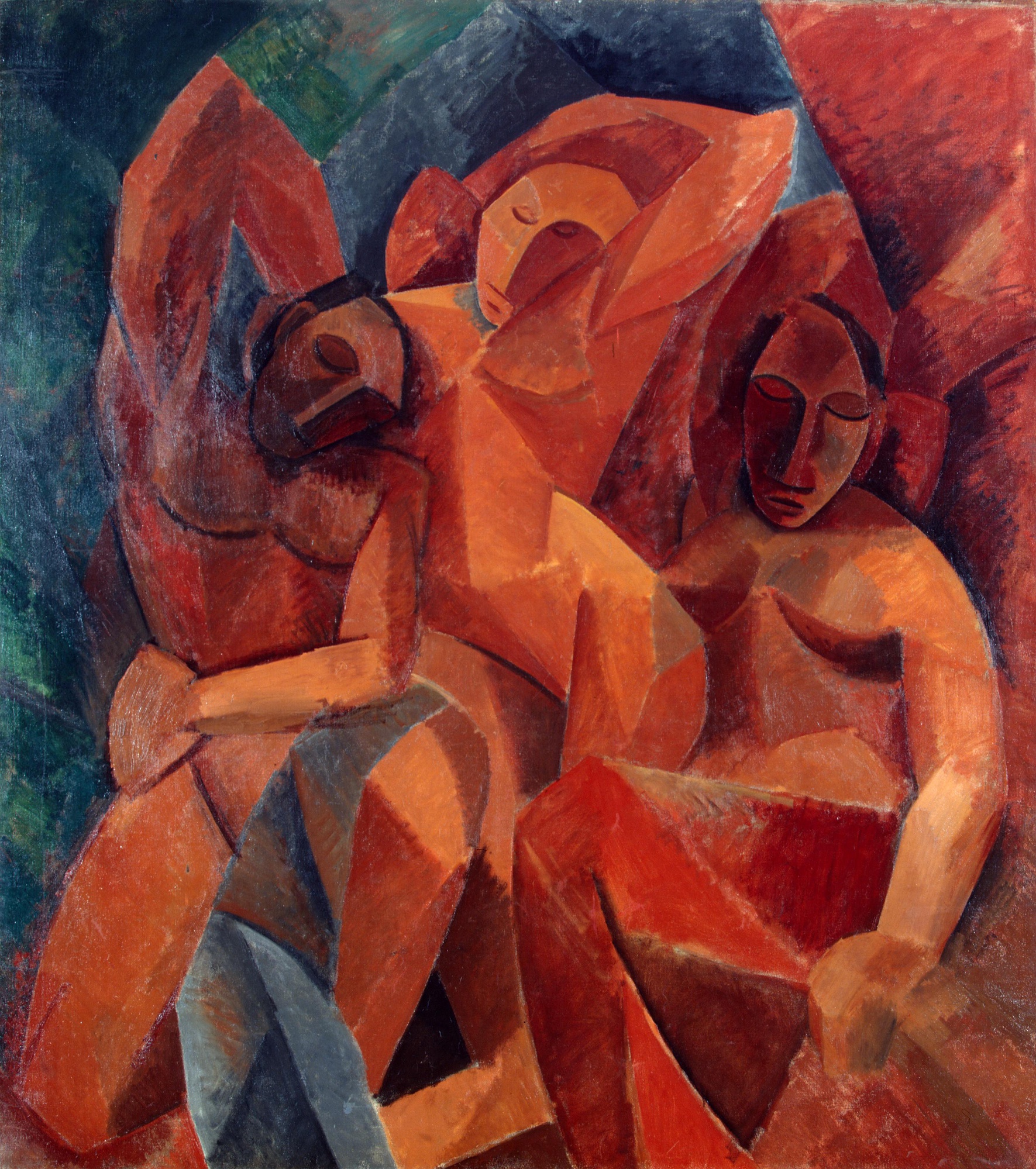
In a 1978 essay, Leo Steinberg describes Picasso’s Three Women — essentially a revised and concentrated version of his Les Demoiselles d’Avignon (1907) — as a “nativity story” about the birth of three dimensions from two. The image seems to contract, buckle, and fold; it is “a catastrophe in three dimensions.” Purchased by Gertrude and Leo Stein, the painting was displayed at the Paris salon for five years — where it was seen by every avant-garde artist who lived in or visited Paris. It was a crucial influence on cubism and geometric abstraction.
Pepe Karmel notes that there’s a “curving lattice” at work in early cubism, one that charges its subjects — Picasso and Braque painted still figures and objects — with dynamism. They seem to turn and twist while remaining in place. Cubism had not so much thrown away the fundamentals of Renaissance art as transformed them; instead of a receding perspective of diagonals, converging on a vanishing point, here we find scaffoldings of overlapping planes, advancing towards the viewer.
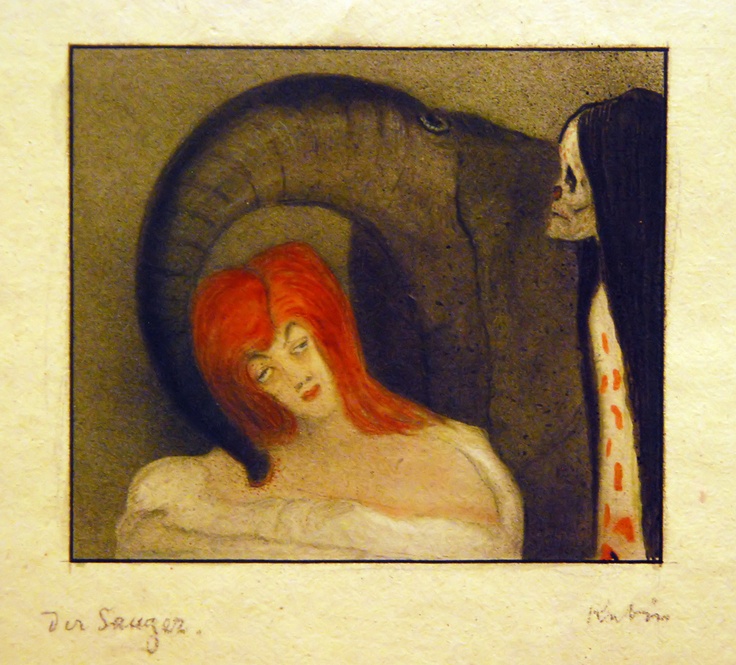
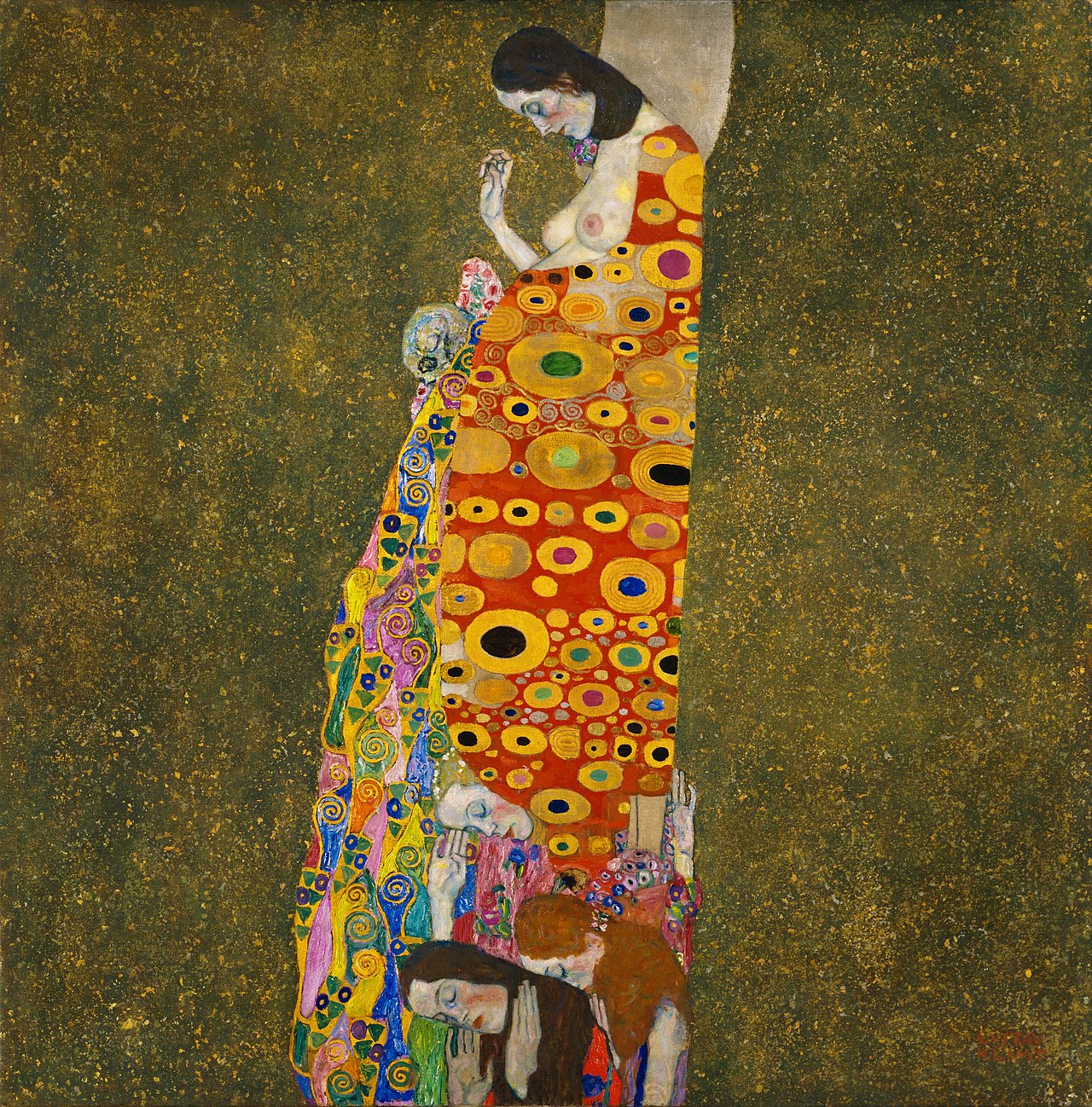
It was entitled Vision by Klimt, but has become known as Hope II after the earlier work Hope. His subject is wearing a long dress or cloak decorated with geometric shapes. A human skull appears from behind her pregnant abdomen.

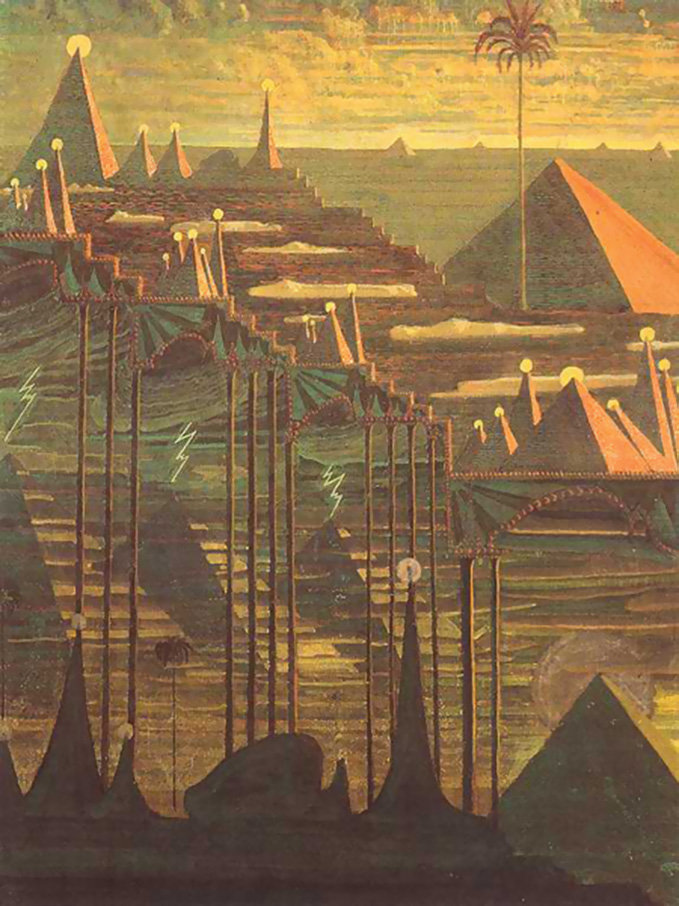
Čiurlionis’ Sonata of the Pyramids collection (three paintings) portrays an Orientalist fascination with the unknown and attributes mystical values to the far East. “Allegro” (more lively composition, with the three lightning bolts), “Andante” (more tranquil), “Scherzo” (more playful).
Čiurlionis believed in reincarnation and the pre-existence of human souls, both central Theosophical tenets. To his future wife Sofija, he wrote that “our beginning is somewhere in the infinity before all ages” and that “a very long time ago, and definitely not once, we have already changed our form. But the memory is weak, and to recall it requires extraordinary concentration.”
The pyramids are places where humans can experience the intervention of higher cosmic powers, which inter alia prepare for reincarnation.
Ancient structures are represented next to fantastic, modernistic buildings.
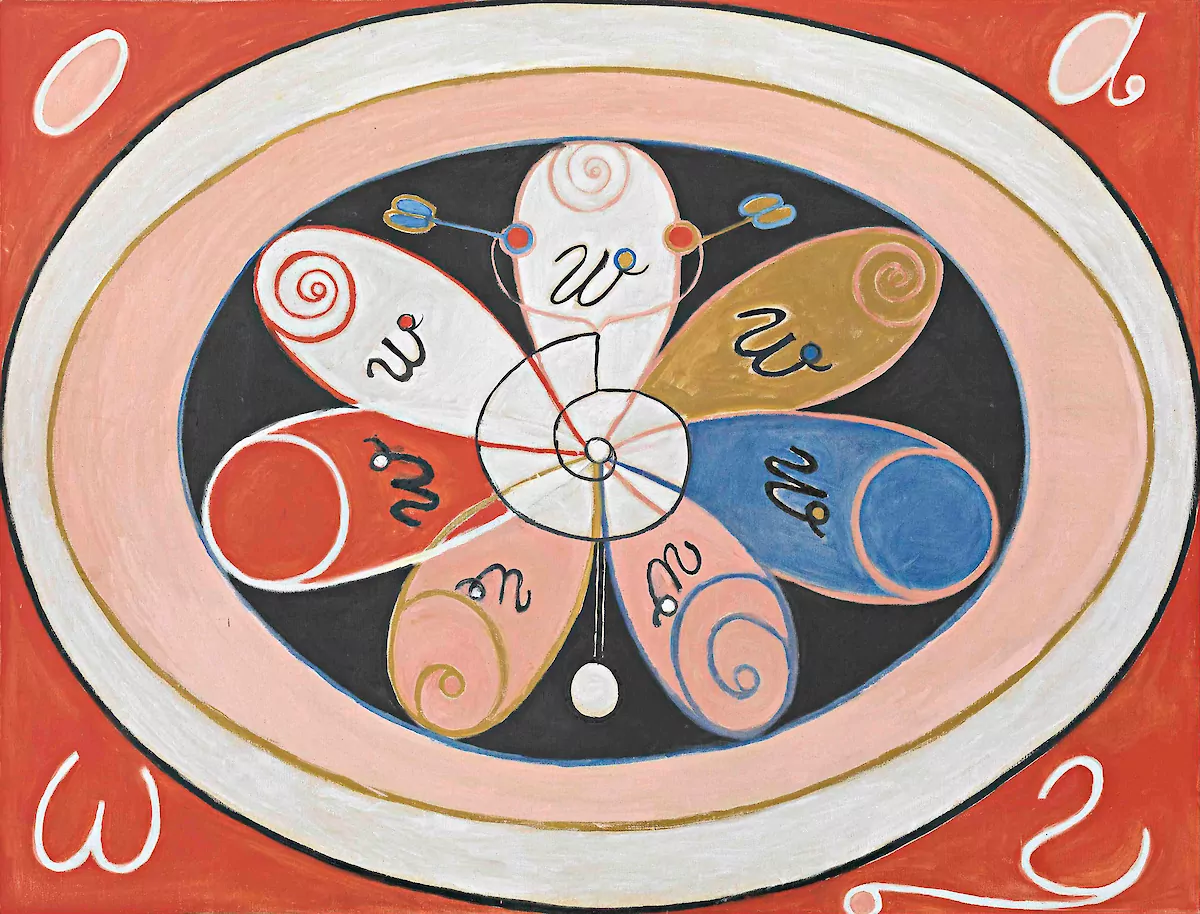
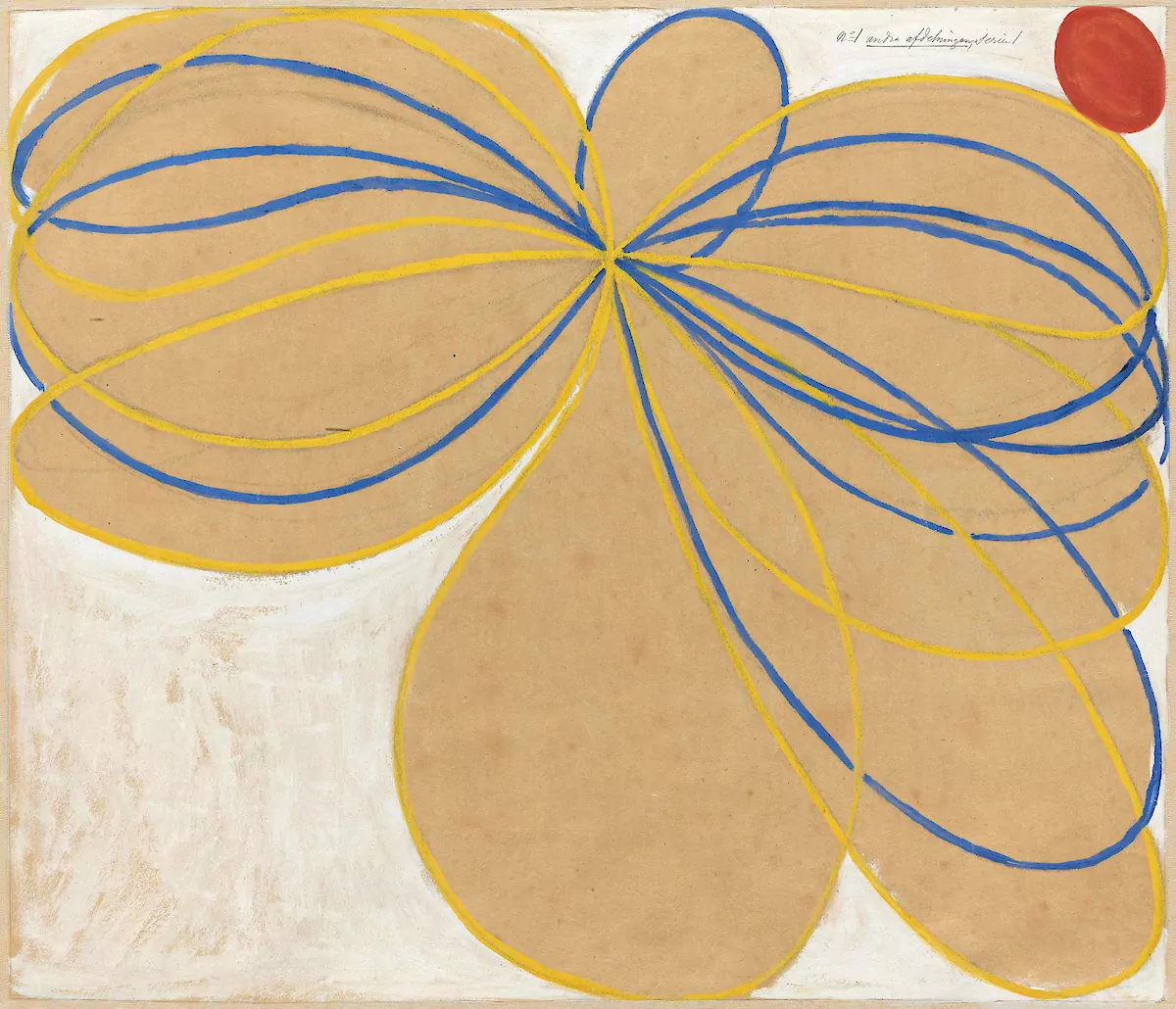

“Kandinsky’s use of the horse-and-rider motif symbolized his crusade against conventional aesthetic values and his dream of a better, more spiritual future through the transformative powers of art.” — from the Guggenheim’s website
In 1908, the year he completed Blue Mountain, Kandinsky’s style became increasingly abstract and expressionistic and his thematic concerns shifted from the portrayal of natural events to apocalyptic narratives.
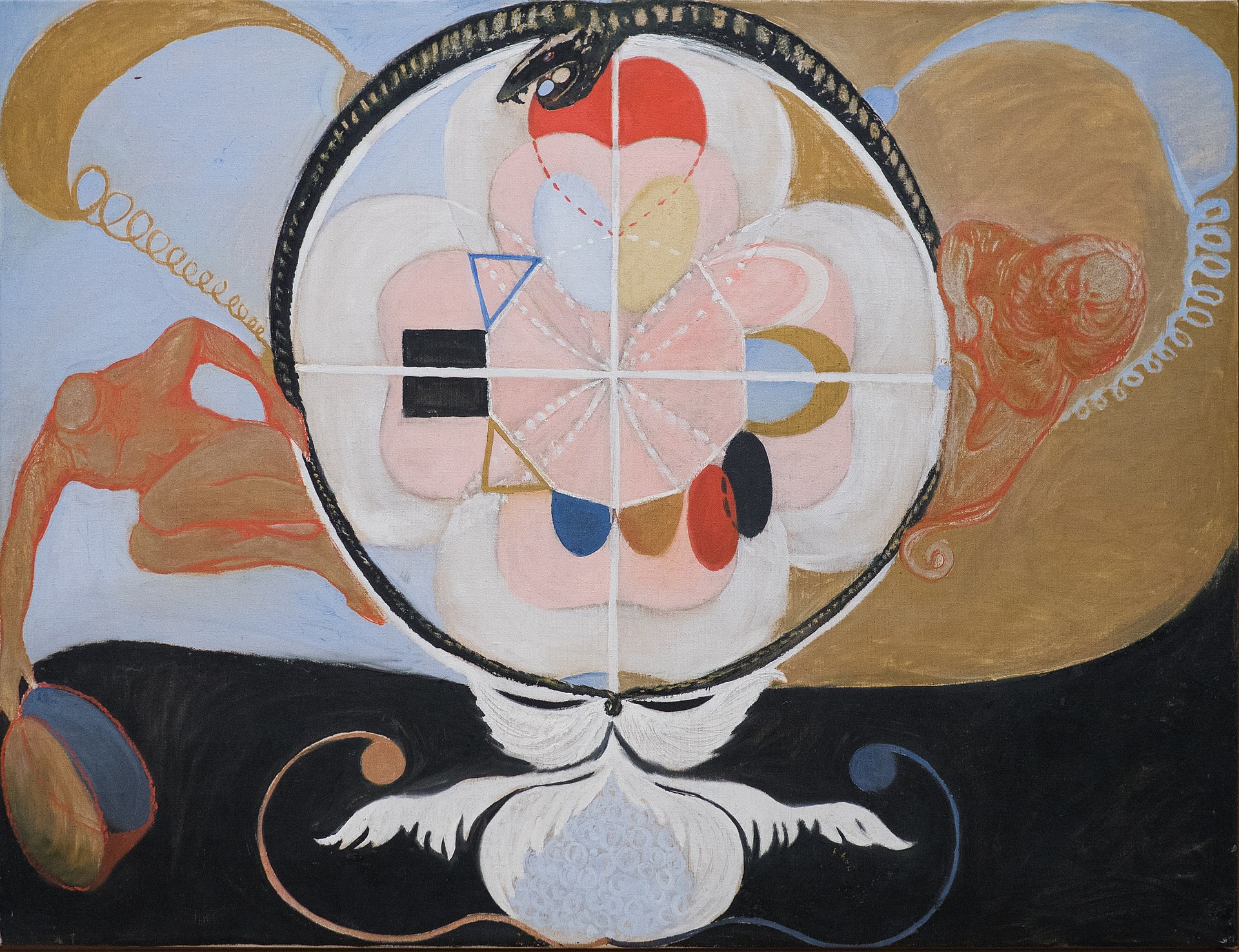
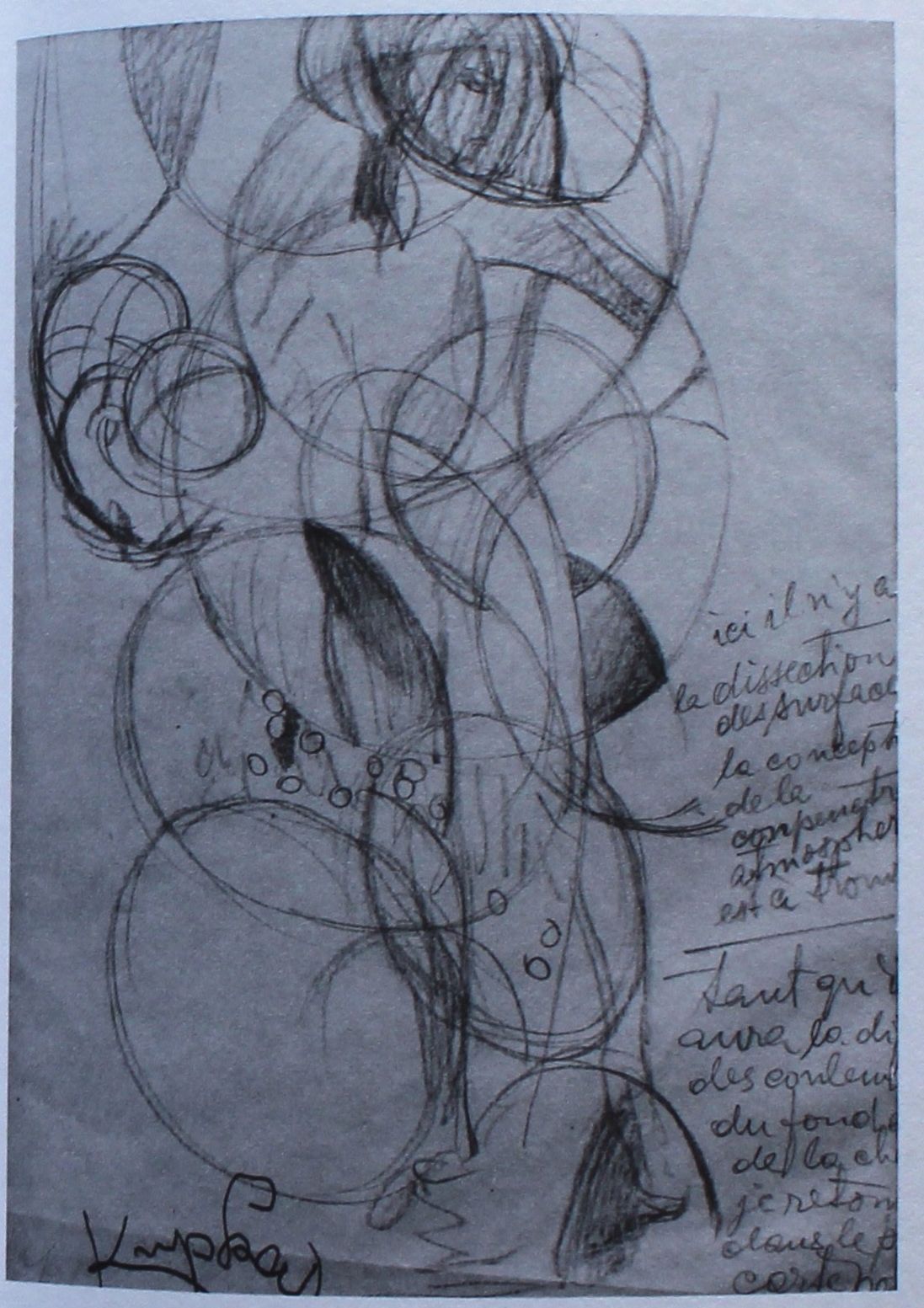
Kupka’s “Study for Girl with a Ball” (1908-09).
In 1908, Kupka paints “Girl with a Ball.” He was frustrated with the inability of traditional painting methods to depict the motion that he saw. When he finished this painting, he continued doing sketches, trying to draw motion.
In a note on the pencil drawing, Kupka details his frustrations: “ici il n’y a que/ la dissection/ des surfaces/ la conception/ de la/ conpenetration [sic]/ atmospherique/ est a trouver/ tant qu’il y/ aura la difference/ des couleurs/ du fond et/ de la chair/ je retomberai/ dans le [sic] photo/ carte postal”. Loosely translated it means, “Here I am only dissecting surfaces. The atmospheric copenetration is yet to be found. As long as there is a distinction in colour between ground and flesh, I will fall back into the postcard photograph.”
MORE RADIUM AGE SCI FI ON HILOBROW: RADIUM AGE SERIES from THE MIT PRESS: In-depth info on each book in the series; a sneak peek at what’s coming in the months ahead; the secret identity of the series’ advisory panel; and more. | RADIUM AGE: TIMELINE: Notes on proto-sf publications and related events from 1900–1935. | RADIUM AGE POETRY: Proto-sf and science-related poetry from 1900–1935. | RADIUM AGE 100: A list (now somewhat outdated) of Josh’s 100 favorite proto-sf novels from the genre’s emergent Radium Age | SISTERS OF THE RADIUM AGE: A resource compiled by Lisa Yaszek.
